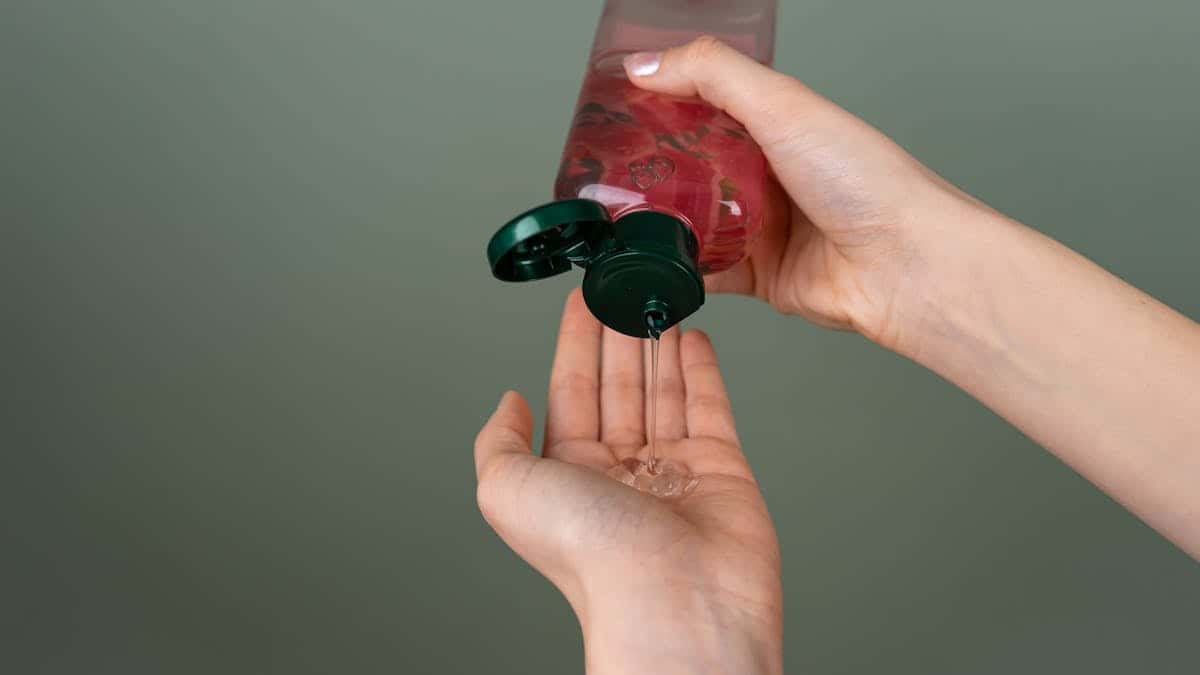Here is your complete guide to shave gel vs shower gel.
Introduction to Shave Gel vs Shower Gel
In the world of personal grooming, the debate between shave gel vs shower gel is one that often arises. Both products serve specific purposes in our daily routines, but understanding their differences can significantly enhance your grooming experience. Whether you’re a seasoned shaver or someone who enjoys a refreshing shower, knowing when and how to use these products can make a world of difference.
This article will delve into the intricacies of shave gel and shower gel, exploring their ingredients, benefits, and optimal usage. By the end, you’ll have a clearer understanding of which product suits your needs best, helping you elevate your personal care routine.
Understanding Shave Gel
What is Shave Gel?
Shave gel is a specialized product designed to prepare the skin for shaving. It typically comes in a tube or pump bottle and is formulated to create a protective layer over the skin, allowing for a smoother shave.
Common Ingredients
- Aloe Vera: Known for its soothing properties, it helps reduce irritation.
- Tea Tree Oil: Offers antibacterial benefits, preventing infections.
- Glycerin: Acts as a humectant, drawing moisture to the skin.
Benefits of Using Shave Gel
Using shave gel comes with several advantages:
- Softens Hair: The gel helps to soften facial or body hair, making it easier to shave.
- Provides Lubrication: This reduces friction between the razor and skin, minimizing irritation.
- Transparency: Many shave gels are transparent, allowing for precision shaving—particularly useful for intricate styles.
How to Use Shave Gel Effectively
To maximize the benefits of shave gel, follow these tips:
- Prep Your Skin: Start with warm water to open up pores.
- Apply Generously: Use enough gel to cover the area you plan to shave.
- Use a Sharp Razor: A fresh blade will reduce tugging and irritation.
- Shave in the Direction of Hair Growth: This minimizes irritation and ingrown hairs.
Understanding Shower Gel
What is Shower Gel?
Shower gel is a liquid soap used primarily for cleansing the body during bathing. Unlike traditional bar soaps, shower gels are often formulated with moisturizing agents and fragrances.
Typical Ingredients
- Glycerin: Helps retain moisture in the skin.
- Essential Oils: Provide fragrance and additional skin benefits.
- Sulfates: Commonly used as surfactants for lathering.
Benefits of Using Shower Gel
The benefits of using shower gel include:
- Effective Cleansing: Removes dirt, sweat, and impurities from the skin.
- Hydration: Many formulations include moisturizing ingredients that help keep skin hydrated.
- Variety of Scents: Available in numerous fragrances, enhancing your shower experience.
How to Use Shower Gel Effectively
For optimal results with shower gel, consider these steps:
- Wet Your Skin: Start with warm water to open pores.
- Apply a Small Amount: A little goes a long way; use about a quarter-sized amount.
- Lather Up: Use your hands or a loofah to create a rich lather.
- Rinse Thoroughly: Make sure all product is washed off to avoid residue.
Key Differences Between Shave Gel vs Shower Gel
Understanding the differences between shave gel vs shower gel can help you choose the right product for your grooming needs. Below is a detailed comparison:
| Feature | Shave Gel | Shower Gel |
|---|---|---|
| Primary Use | Prepares skin for shaving | Cleanses body |
| Consistency | Thick, lubricating | Liquid, foamy |
| Skin Benefits | Reduces irritation, softens hair | Hydrates, nourishes |
| Transparency | Yes | No |
| Typical Ingredients | Aloe vera, tea tree oil | Glycerin, essential oils |
Texture and Consistency
- Shave gel is usually thicker and designed to create a protective barrier on the skin.
- Shower gel has a more liquid consistency that lathers easily when mixed with water.
Primary Functionality
- The primary function of shave gel is to facilitate a smooth shaving experience by reducing friction.
- In contrast, shower gel focuses on cleansing the skin from dirt and oil.
Skin Benefits
- While both products can provide hydration, shave gel specifically targets hair softness and irritation reduction during shaving.
- Shower gel, on the other hand, emphasizes overall skin cleanliness and hydration.
When to Use Each Product
Knowing when to use each product can enhance your grooming routine:
Situational Use Cases
- When to Opt for Shave Gel
- During your shaving routine—whether it’s facial hair or body hair.
- If you have sensitive skin that requires extra lubrication.
- When to Use Shower Gel
- For daily cleansing routines after workouts or throughout the day.
- As part of your morning or evening shower ritual.
Combination Usage
In some cases, using both products can be beneficial:
- Consider using shower gel first for cleansing before applying shave gel during your shaving routine.
- This approach ensures that your skin is clean and prepped for an effective shave.
Environmental Considerations
As consumers become more environmentally conscious, it’s essential to consider the sustainability of grooming products.
Sustainability of Ingredients
Both shave gels and shower gels can contain eco-friendly ingredients:
- Look for brands that emphasize natural ingredients without harmful chemicals.
- Check for certifications like cruelty-free or organic.
Packaging Impact
The environmental footprint of packaging also matters:
| Product Type | Common Packaging Materials | Eco-Friendly Options |
|---|---|---|
| Shave Gel | Plastic tubes or bottles | Recyclable or biodegradable packaging |
| Shower Gel | Plastic bottles | Refillable options |
Choosing brands that prioritize sustainable packaging can help reduce waste in our environment.
Common Mistakes to Avoid When Using Shave Gel vs Shower Gel
Not Using the Right Product for the Right Purpose
One of the most common mistakes is using shower gel in place of shave gel. While shower gel may seem convenient, it lacks the necessary lubricating properties that shave gel provides. This can lead to:
- Irritation: Without proper lubrication, your razor can irritate the skin, causing redness and bumps.
- Cuts and Nicks: The lack of a protective barrier increases the risk of cuts during shaving.
Skipping Shave Gel or Cream
Many individuals still make the mistake of shaving without any shave gel or cream. This is a crucial step that should never be overlooked. The absence of a shaving product can result in:
- Razor Burn: Shaving without lubrication can cause painful razor burn.
- Uneven Shaves: Without a smooth glide, it’s challenging to achieve an even shave.
Dry Shaving
Dry shaving is another prevalent mistake. Many people rush through their routine and skip the necessary steps to prepare their skin. This can lead to:
- Skin Damage: Shaving without water or gel can cause micro-tears in the skin.
- Increased Sensitivity: The skin becomes more sensitive and prone to irritation.
Using Hot Water
While warm water is ideal for softening hair and skin, using excessively hot water can be detrimental. It may lead to:
- Skin Vulnerability: Hot water can strip natural oils from your skin, making it more susceptible to cuts.
- Dehydration: Overly hot showers can dry out your skin, leading to discomfort post-shave.
Shaving Against the Grain
Shaving against the direction of hair growth is a common mistake that many make, thinking it will yield a closer shave. However, this practice can result in:
- Ingrown Hairs: Shaving against the grain increases the likelihood of hairs growing back into the skin.
- Irritation and Cuts: This technique often leads to more nicks and irritation.
Not Moisturizing After Shaving
After shaving, neglecting to moisturize is a significant oversight. Failing to apply a moisturizer can cause:
- Dry Skin: The skin can become dry and flaky without proper hydration.
- Post-Shave Irritation: Moisturizing helps soothe irritated skin and reduces redness.
FAQs about Shave Gel vs Shower Gel
What is better for sensitive skin?
If you have sensitive skin, shave gel is generally better due to its lubricating properties that reduce irritation during shaving. Look for gels specifically formulated for sensitive skin.
Read Also: Lip Flip with Botox.
Can I use shower gel for shaving?
While you can use shower gel in a pinch for shaving, it’s not recommended as it lacks the necessary lubrication that shave gel provides. This may lead to nicks and irritation.
Read Also: Thick Hair vs Thin Hair.
Are there any natural alternatives?
Yes! There are many natural alternatives available for both products:
- For shave gel, consider using coconut oil or aloe vera as they provide excellent lubrication.
- For shower gel, look for products made with natural oils and herbal extracts without synthetic fragrances.
Read Also: Bad Botox Before and After.
Conclusion
In conclusion, understanding the differences between shave gel vs shower gel can greatly enhance your personal grooming routine. Each product serves its unique purpose—shave gel prepares your skin for a smooth shave while protecting against irritation, whereas shower gel cleanses and hydrates your body effectively.
Read Also: Dark Spots Before After.
By choosing the right product based on your specific needs and preferences, you can ensure that your grooming routine is not only effective but also enjoyable. Whether you opt for one over the other or choose to incorporate both into your regimen, being informed will help you make better choices for your skin health. Happy grooming!
Read Also: Before After Waxing.
References and Resources Used in This Article:
- Shaving Soap, Cream or Gel: Which Is Best? – Wilkinson Sword
- Development, Characterization and Evaluation of Shaving Gel Using Chitosan as a Gelling Agent – Research Journal of Pharmacy and Technology
- Shaving Cream vs Gel: Which Should You Use? – Kiehl’s
- How to shave: Why you should never use shower gel – News.com.au
- Should You Use Body Wash, Shower Gel, or Bar Soap? – Real Simple

